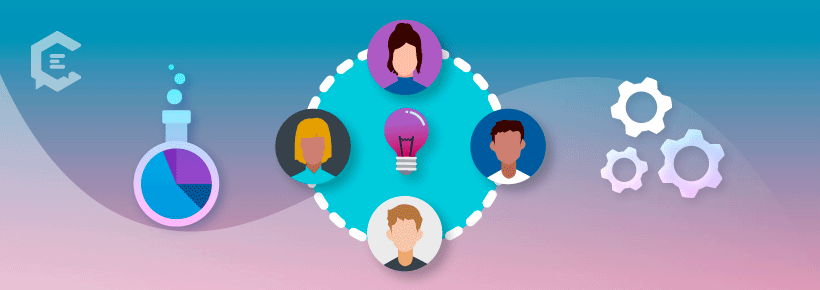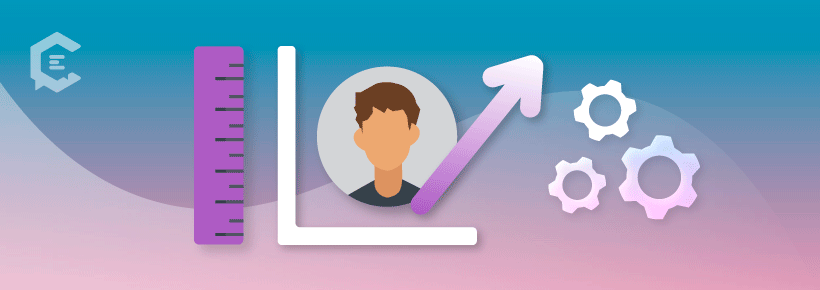It’s no secret that the remote fever could very well become the new normal. As a result, businesses, organizations, and communities must now figure out how to function and work together differently yet still continue to be productive.
For the businesses that are focused on building, launching, or improving their products in 2020, the way in which their teams work with focus groups has changed. Many businesses are figuring out how to best work with focus groups that are now remote to build and improve their products.

What is the purpose of focus groups?
Let’s first define what a focus group is and its purpose. Focus groups typically involve a group of subject matter experts or key stakeholders to help teams brainstorm or provide advice, feedback, or expert judgment on a product or feature idea as well as provide financial, political, or other support.
Focus groups allow marketing and development teams to effectively research and gather insights about brand, company, or product impressions, and explore product and feature ideas.
Focus groups are especially effective during the early product development stages.
For example, some goals to achieve with focus groups include the following:
- Brainstorming or discussing ideas
- Gathering initial feedback and impressions of those ideas
- Brainstorm and identify potential concerns or risks
- Researching and understanding users’ expectations of a new product or feature
- Reviewing any initial wireframes or mockups
- Verifying the MVP of a particular product or feature
All in all, the purpose of a focus group is to brainstorm, discuss, and review product and/or feature ideas before they become a complete product. Focus groups can also help marketing and development teams work through challenges or obstacles in the research process. Involving team members and users to discuss their experiences at a high level is an excellent research approach.
3 ways to run remote focus groups
Most focus groups take place in real-time and in-person in a large conference or meeting room. However, with today’s remote climate, focus groups are now virtual. As many individuals and businesses are discovering, working, and collaborating remotely has its advantages and disadvantages.
Regardless of the team’s approach or methodology to running focus groups, many meetings are disorganized, lack participation and engagement, and are riddled with technical problems. As a result, teams struggle with getting the same results and benefits from virtual focus groups that they do with in-person meetings and sessions. Here are some ways to run remote focus groups in order to reap the same benefits and results.
1. Synchronous multi-person video conferences
The most common method for running remote focus groups is with synchronous multi-person video conferences. This type of communication involves all parties or participants taking part in the conversation at the same time.
For example, a live telephone or video conference is a perfect example of this type of communication, and it is likely a method that remote workers already use every day.
Here are some common examples of synchronous communication:
- Audio conference. A telephone call between two individuals or a conference call that involves multiple participants or attendees.
- Computer-assisted conference. An audio conference with a computer connection that allows users to also “screen share” or show documents or applications that other participants can see, edit, or interact with during the meeting.
- Video conference. Similar to an audio conference, this method involves live views of the participants. Many of today’s laptops and devices have built-in cameras that allow video conferencing.
Synchronous communications often extend to instant messaging or chat, however, this may not be the best way to conduct remote focus groups. It can be challenging to monitor all the different chat messages and ensure that everyone is heard and the appropriate notes and feedback are collected accurately.
To use synchronous communication effectively, it’s important to have a well-thought-out, organized agenda, a note-taker, and a facilitator to ensure the conference stays on topic, participants all feel heard, and all feedback is captured accurately for future analysis. Here are some other tips on how to host and run an effective video conference.
2. Asynchronous interview formats
This type of communication method allows the interviewer to ask pre-established or pre-recorded questions via video. This means that the interviewer or focus group facilitator doesn’t have to conduct the meeting live. The recorded video is then distributed via an online portal to focus group participants to complete at their convenience without the need for scheduling.
Of course, there are advantages and disadvantages to this particular method. The first benefit is that focus group participants can answer the questions on their own time and aren’t required to sit through a live virtual meeting. This method also saves time and helps keep participants’ thoughts on track and focused.
On the other hand, this method is less engaging and therefore can be less effective. Many recorded sessions don’t allow much time for participants to answer questions. Furthermore, this method may also result in participant drop-off. If participants don’t have to participate in real-time, then they may not at all. This method also hinders the ability for team members to ask more questions and build rapport and relationships with focus group members, and even results in low engagement and interaction.
There are also technical risks to consider. For example, if the pre-recorded answers weren’t recorded or delivered properly, then this may require team members to spend more time and effort troubleshooting rather than focusing on getting answers and improving products.
3. Survey panel respondent groups
This method involves leveraging online market research solutions to provide online survey takers or panelists. Surveys are effective methods for various types of research projects, such as product development, brand impressions, content creation, and concept testing.
There are various online survey platforms and tools available, including SurveyMonkey. Interviewers can build and create surveys, distribute them to focus group members, or even select audience demographics to send surveys to.
Again, there are advantages and disadvantages to survey panel respondent groups. Some of the advantages include convenience, automated data collection, and minimal cost. Building and sending out surveys is relatively easy, saving both time and money from having multiple resources participating in a live meeting as well as manually collecting data and responses.
On the other hand, similar to the pre-recorded asynchronous communication method mentioned in the previous point, online survey panels can result in participant drop off and decreased interaction and engagement, which can hinder the accuracy or thoroughness of survey responses.
Scaling resources for focus groups
It’s also important for marketing and development teams to be able to scale resources. Scaling resources will ensure your teams and workforce have what they need to do their jobs and run focus groups remotely.
Furthermore, remote focus groups can be conducted in a multitude of ways — each with its own advantages and disadvantages. In fact, sometimes focus groups provide teams with information after verifying data trends.
In these instances, teams already have a data collection regarding an existing product or a brand new product idea. Focus groups can then step in and offer insights and provide feedback or recommendations related to that data. This can be an effective method for not only scaling resources and leveraging data you already have but also a great way to build off feedback.




